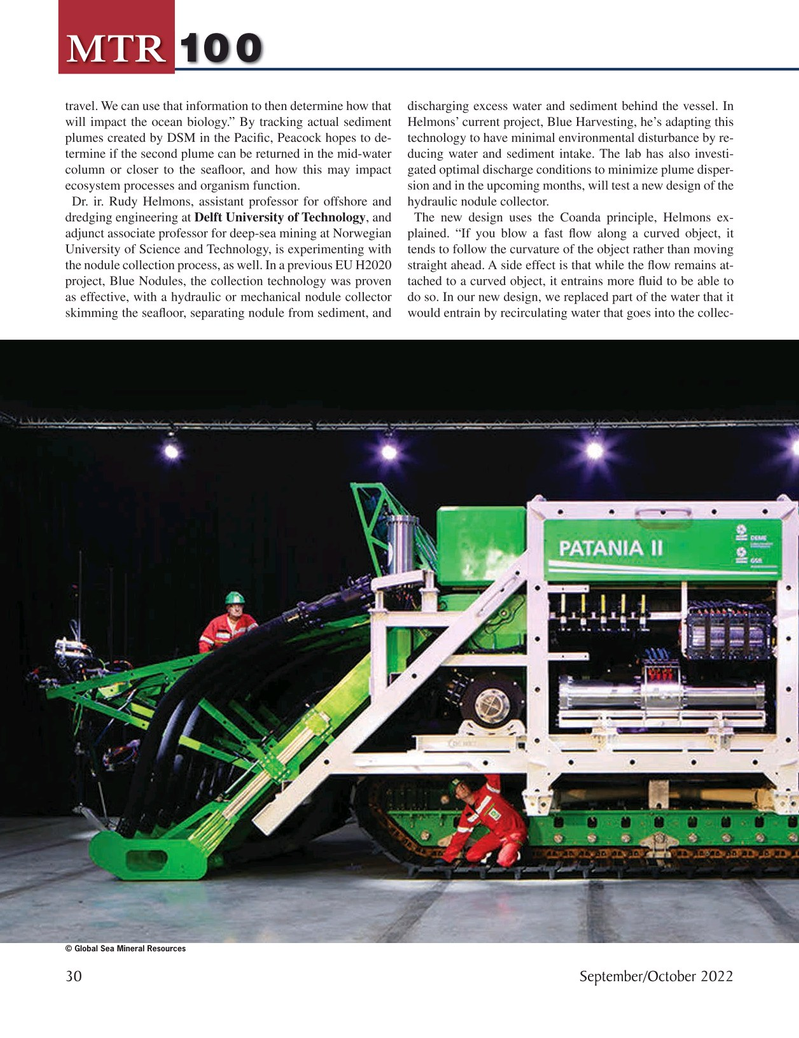
Page 30: of Marine Technology Magazine (September 2022)
Read this page in Pdf, Flash or Html5 edition of September 2022 Marine Technology Magazine
MTR 100 travel. We can use that information to then determine how that discharging excess water and sediment behind the vessel. In will impact the ocean biology.” By tracking actual sediment Helmons’ current project, Blue Harvesting, he’s adapting this plumes created by DSM in the Paci? c, Peacock hopes to de- technology to have minimal environmental disturbance by re- termine if the second plume can be returned in the mid-water ducing water and sediment intake. The lab has also investi- column or closer to the sea? oor, and how this may impact gated optimal discharge conditions to minimize plume disper- ecosystem processes and organism function. sion and in the upcoming months, will test a new design of the
Dr. ir. Rudy Helmons, assistant professor for offshore and hydraulic nodule collector.
dredging engineering at Delft University of Technology, and The new design uses the Coanda principle, Helmons ex- adjunct associate professor for deep-sea mining at Norwegian plained. “If you blow a fast ? ow along a curved object, it
University of Science and Technology, is experimenting with tends to follow the curvature of the object rather than moving the nodule collection process, as well. In a previous EU H2020 straight ahead. A side effect is that while the ? ow remains at- project, Blue Nodules, the collection technology was proven tached to a curved object, it entrains more ? uid to be able to as effective, with a hydraulic or mechanical nodule collector do so. In our new design, we replaced part of the water that it skimming the sea? oor, separating nodule from sediment, and would entrain by recirculating water that goes into the collec- © Global Sea Mineral Resources 30 September/October 2022
MTR #7 (18-33).indd 30 10/3/2022 8:17:02 AM

 29
29

 31
31
